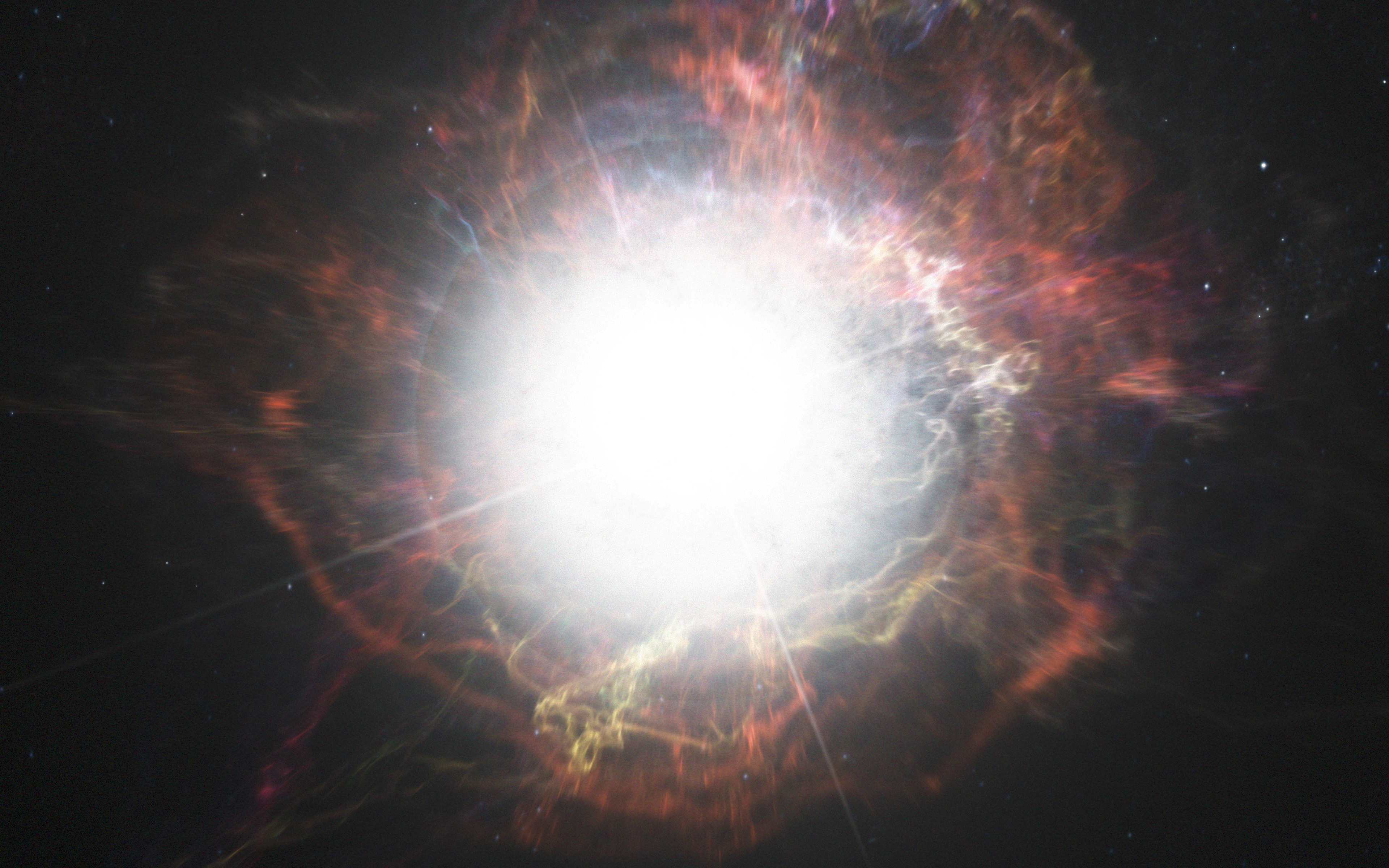Stellar encore: Dying star keeps coming back big time

This illustration made available by the European Southern Observatory in 2014 shows shows dust surrounding a supernova explosion. On Wednesday, Nov. 8, 2017, astronomers reported that a star 500 million light-years away exploded in 1954 and apparently again in 2014. The research confounds scientists who thought they knew how dying stars ticked. (M. Kornmesser/ESO via AP)
CAPE CANAVERAL, Fla. (AP) — Death definitely becomes this star.
Astronomers reported Wednesday on a massive, distant star that exploded in 2014 — and also, apparently back in 1954. This is one supernova that refuses to bite the cosmic dust, confounding scientists who thought they knew how dying stars ticked.
The oft-erupting star is 500 million light-years away — one light-year is equal to 5.9 trillion miles (9.5 trillion kilometers) — in the direction of the Big Bear constellation. It was discovered in 2014 and, at the time, resembled your basic supernova that was getting fainter.
But a few months later, astronomers at the California-based Las Cumbres Observatory saw it getting brighter. They’ve seen it grow faint, then bright, then faint again five times. They’ve even found past evidence of an explosion 60 years earlier at the same spot.
Supernovas typically fade over 100 days. This one is still going strong after 1,000 days, although it’s gradually fading. The finding was published Wednesday in the journal Nature .
“It’s very surprising and very exciting,” said astrophysicist Iair Arcavi of the University of California, Santa Barbara who led the study. “We thought we’ve seen everything there is to see in supernovae after seeing so many of them, but you always get surprised by the universe. This one just really blew away everything we thought we understood about them.”
The supernova — officially known as iPTF14hls — is believed to have once been a star up to 100 times more massive than our sun. It could well be the biggest stellar explosion ever observed, which might explain its death-defying peculiarity.
It could be multiple explosions occurring so frequently that they run into one another or perhaps a single explosion that repeatedly gets brighter and fainter, though scientists don’t know exactly how this happens.
One possibility is that this star was so massive, and its core so hot, that an explosion blew away the outer layers and left the center intact enough to repeat the entire process. But this pulsating star theory still doesn’t explain everything about this supernova, Arcavi said.
Harvard University’s astronomy chairman, Avi Loeb, who was not involved in the study, speculates a black hole or magnetar — a neutron star with a strong magnetic field — might be at the center of this never-before-seen behavior. Further monitoring may better explain what’s going on, he said.
Las Cumbres , a global network of robotic telescopes, continues to keep watch.
Scientists do not know whether this particular supernova is unique; it appears rare since no others have been detected. “We could actually have missed plenty of them because it kind of masquerades as a normal supernova if you only look at it once,” Arcavi said.
Nothing lasts forever — not even this super supernova. “Eventually, this star will go out at some point,” Arcavi said. “I mean, energy has to run out eventually.” AB
RELATED STORIES:
NASA asks netizens to name distant object in Kuiper belt
Stephen Hawking fears Earth will turn into giant ball of fire by 2600
Strange interstellar object enters solar system, detected by scientists for the first time